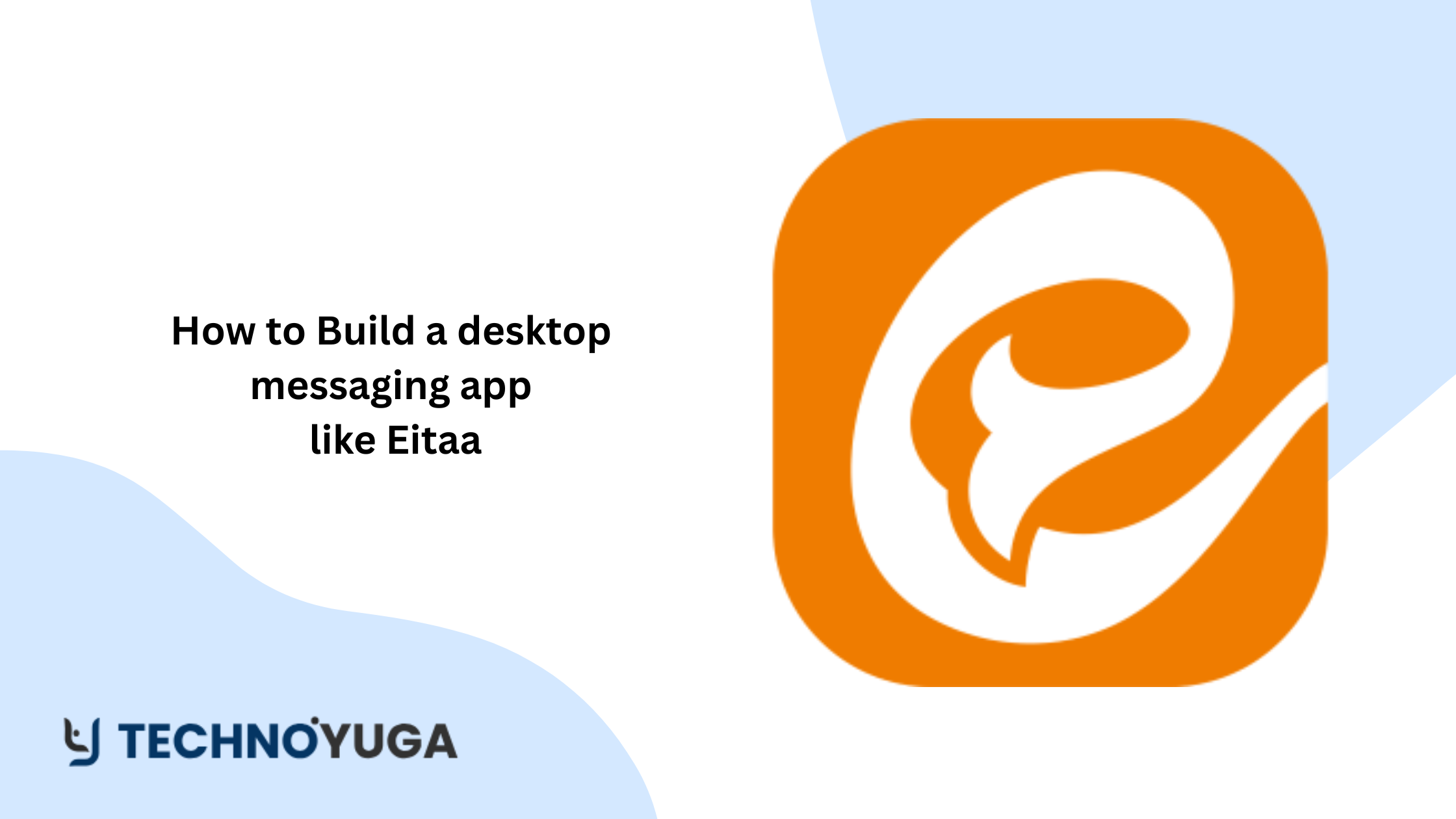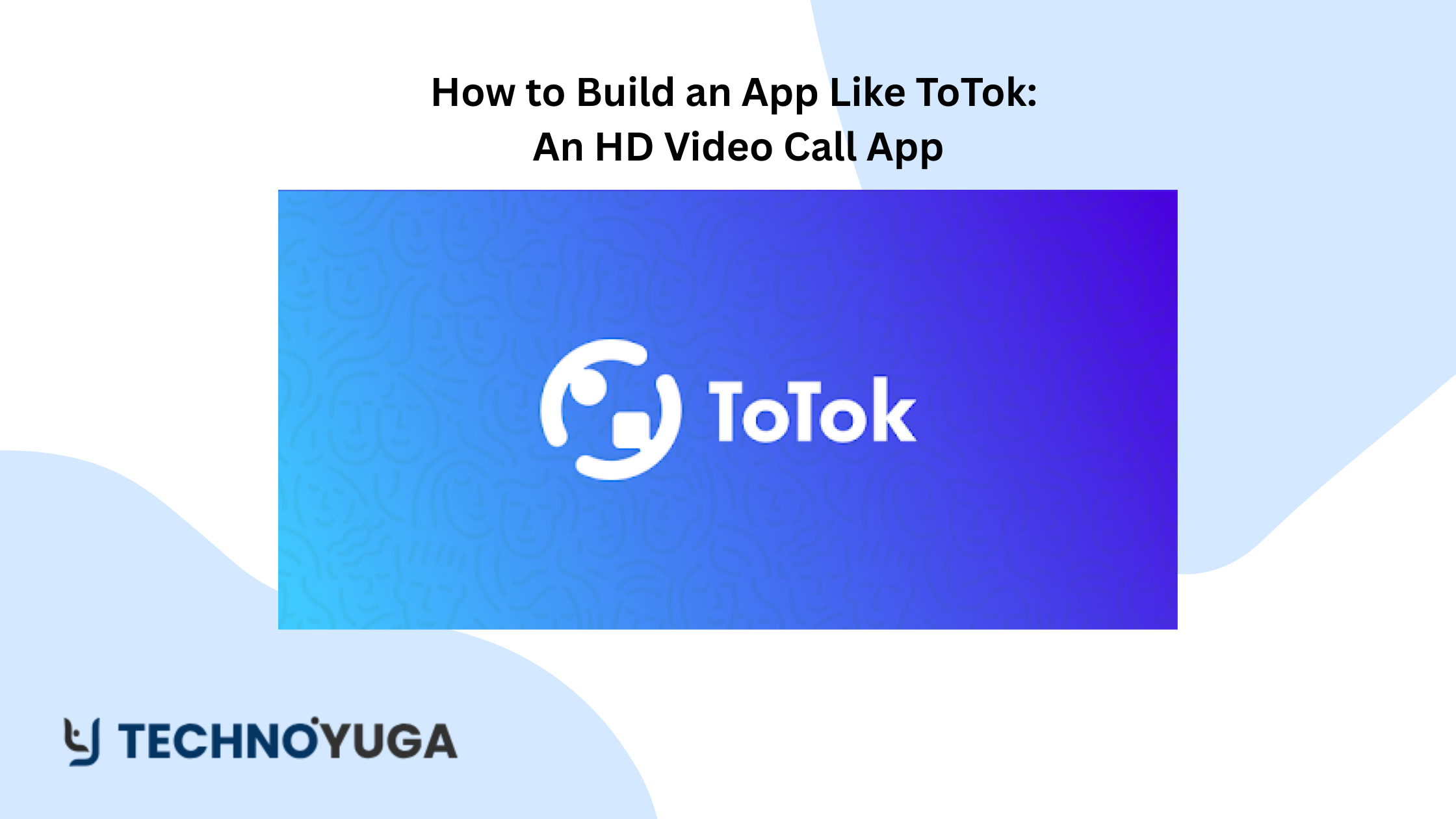Introduction
In an era dominated by digital communication, secure and reliable messaging platforms have become essential for both individuals and organizations. If you’re looking to build a desktop messaging app like Eitaa, you’re not alone—businesses worldwide are exploring the potential of custom messaging app development to create platforms that prioritize privacy, performance, and user experience.
Eitaa, known for its strong focus on privacy and encryption, has emerged as a popular alternative to mainstream messaging apps. Whether you’re interested in Eitaa clone app development, creating a desktop chat app like Eitaa, or launching your own secure messaging app development project, understanding the process, tech stack, and cost is critical to success.
In this guide, we’ll explore everything you need to know to develop an encrypted messaging app like Eitaa, from core features to the best tech stack for desktop messaging app development. We’ll also touch on mobile counterparts with insights into Android app development, iPhone app development, and how to integrate your platform across devices.
Whether you’re a startup, an entrepreneur, or an on-demand app development company, this blog will help you navigate the path of creating a secure, scalable, and user-friendly messaging platform. We’ll also break down the cost to develop messaging app like Eitaa, highlight the advantages of hiring skilled teams from a messaging app development company, and show how a strong development partner can influence your messaging app development cost and time to market.
From building a cross-platform solution to understanding what sets successful apps apart, let’s dive into the step-by-step process to build a desktop messaging app like Eitaa—your next big idea in social media app development.
What is Eitaa?
Eitaa is a secure, cloud-based messaging platform that originated in Iran as an alternative to Telegram. It offers similar functionalities, focusing on privacy, fast performance, and free communication across devices. Designed to support both personal and group communication, Eitaa is often used for messaging, media sharing, channel subscriptions, and even broadcasting content to large audiences.
Here are some core highlights of Eitaa:
- Cloud-Based Messaging: Access your messages from any device.
- End-to-End Encryption: Ensures secure conversations.
- Public Channels & Groups: Suitable for communities, businesses, and broadcasting.
- Bot Support: Automate tasks and provide services through integrated bots.
- Cross-Platform Availability: Available on Android, iOS, and desktop.
- Data Hosting in Iran: Appeals to users looking for local infrastructure due to privacy or regional policies.
Eitaa has gained popularity as a Telegram alternative, especially in regions where Telegram access is restricted or where users prefer localized platforms. Its open-source nature and versatile API have also made it a reference point for developers interested in Eitaa clone app development or building secure desktop messaging apps with similar features.
Core Features To Include in Desktop Messaging App like Eitaa
User Authentication with Two-Factor Authentication (2FA)
User authentication is the first line of defense in any messaging app. Implementing secure login options, such as email or phone-based authentication, ensures that only authorized users gain access to the platform. For added security, Two-Factor Authentication (2FA) should be included, requiring users to verify their identity through a secondary method such as an SMS code, authenticator app, or biometric verification. This not only enhances the overall security but also builds user trust. A seamless login experience with an option to remember devices can offer convenience without compromising protection in a secure desktop messaging app like Eitaa.
One-on-One and Group Messaging
A successful desktop messaging app must support both private chats and group conversations. One-on-one messaging allows users to engage in direct, secure communication, while group messaging is essential for collaboration, community discussions, or team communication. Features like read receipts, typing indicators, and message replies improve the usability of chats. Admin privileges and participant management should also be available in group chats. Ensuring that messages sync in real-time across devices is crucial for a smooth experience. These capabilities mirror the real-world usage patterns of messaging apps like Eitaa and increase engagement among users.
Multimedia and File Sharing
Supporting multimedia and file sharing is a core requirement for modern messaging apps. Users expect to share images, videos, documents, voice notes, and other file types instantly. The app should allow drag-and-drop functionality and preview features for quick file views. Additionally, limits on file size should be generous, or adjustable based on user type (e.g., basic vs. premium). Efficient file compression without quality loss ensures fast uploads and downloads. Strong encryption during transfer is essential to safeguard sensitive files. These features make the messaging experience more dynamic and versatile, as seen in robust apps like Eitaa.
End-to-End Encryption
End-to-end encryption (E2EE) is essential for any secure desktop messaging app, especially one inspired by Eitaa. With E2EE, messages are encrypted on the sender’s device and can only be decrypted by the intended recipient. This ensures that even if the data is intercepted during transmission, it remains unreadable. Developers should use well-established encryption protocols like MTProto or Signal Protocol to ensure security. Offering users visible cues (like a “secure” badge) during encrypted conversations can increase transparency. Adding optional disappearing messages and screen security options further enhances privacy and appeals to users who value confidentiality in communication.
Real-Time Messaging with WebSockets
To deliver a seamless and instant communication experience, real-time messaging should be enabled using WebSockets. Unlike traditional HTTP requests, WebSockets allow persistent connections between the server and client, enabling messages to be delivered and received instantly. This technology is crucial for functionalities like live typing indicators, real-time message delivery, and online presence status. When developing a messaging app like Eitaa, using WebSockets ensures that users don’t experience delays or need to refresh to get new messages. This responsiveness significantly improves user experience, especially in high-traffic group chats or business communications where speed matters.
Cross-Platform Synchronization
Cross-platform synchronization ensures that users can access their messages seamlessly across multiple devices such as desktops, laptops, and smartphones. Messages, files, and notifications should be instantly synced in real-time regardless of the device used. This feature enhances convenience and accessibility, especially for users who switch between devices frequently. For a messaging app like Eitaa, maintaining a consistent user experience across platforms is crucial. Implementing a robust back-end infrastructure with cloud-based storage and real-time data syncing mechanisms can help achieve this. Additionally, features like session management and device logout options enhance user control and security.
Message Search and History Access
A powerful search function is vital for users to locate past conversations, specific messages, or shared files quickly. This feature enhances usability, particularly for users managing large group chats or long-term conversations. Advanced filters like date, sender, file type, or keywords can make searches more efficient. Additionally, storing and organizing chat history on secure cloud servers allows users to retrieve data across devices. For a secure desktop messaging app like Eitaa, encrypted storage of message history is essential. Providing users with control over data retention, including the ability to delete or archive conversations, further strengthens data privacy.
Notification and Alert System
Effective notifications are key to keeping users informed without overwhelming them. A messaging app like Eitaa should provide real-time notifications for new messages, calls, mentions, or system updates. Users must have the ability to customize alert settings per conversation or group. Desktop notifications should integrate with the operating system’s native alert system, allowing for easy dismissal or quick replies. Additionally, silent hours or Do Not Disturb (DND) modes enhance user experience. Ensuring notifications are timely, non-intrusive, and easily manageable makes the app user-friendly while maintaining high engagement levels among users.
Admin Panel for User and Content Management
An admin panel is essential for managing users, content, and group activities, especially in public or business-focused messaging platforms. Admins should be able to monitor group activities, handle reported content, ban users, and assign roles. The panel can also be used for analytics—tracking engagement, active users, and usage patterns. For a desktop messaging app like Eitaa, which supports public channels and groups, a robust moderation system ensures compliance and user safety. Including permission hierarchies and audit logs provides transparency and accountability. The admin panel enhances the app’s scalability and trustworthiness, particularly for community or enterprise use.
Chat Customization and Personalization
Personalization features enhance the user experience and engagement levels. Letting users customize chat themes, font sizes, notification tones, and chat backgrounds makes the app feel more personal and user-friendly. Dark mode, for instance, is a widely appreciated feature. Custom emojis, stickers, and avatars further enrich interactions. For a desktop messaging app like Eitaa, allowing users to personalize their interface can set it apart from competitors. Personalization not only improves visual appeal but also makes users more likely to stick with the app, especially when the interface adapts to their individual preferences and comfort.
Steps to Build a desktop messaging app like Eitaa
Define Your Product Vision and Target Audience
Before diving into development, it’s crucial to clearly define the purpose of your messaging app. Determine what makes it different from existing platforms like Eitaa or Telegram. Will you focus on privacy, speed, design, or specific regional needs? Define your target audience—corporate users, general consumers, or a specific language demographic. Understand their pain points and expectations from a desktop chat app. This clarity helps shape features, user interface, and overall branding.
Early market research, competitor analysis, and customer interviews can guide this stage. Consider creating user personas and user journey maps. This foundational step ensures your messaging app is not only technically sound but also relevant and market-ready. Aligning your business goals with the actual user demand sets a strong base for the entire project lifecycle and helps prioritize development features effectively, especially when working with limited resources or tight deadlines.
List Core Features and Functional Requirements
Once you know your audience and purpose, list down the must-have features for your Eitaa-like messaging app. At a minimum, your app should support user registration, one-on-one and group chats, file sharing, end-to-end encryption, and a robust notification system. Optional features might include bot integration, voice notes, message forwarding, and public channels. Also, define the scope of admin controls and user privacy settings. Write clear functional requirements for each feature: what it does, how users interact with it, and how it connects to other features.
This helps developers avoid ambiguity and ensures the team works towards a shared vision. Create wireframes or mockups to visualize these features. Include technical constraints such as message size limits, media formats, and offline support. These detailed specifications act as a blueprint for your developers and also provide a baseline for testing and quality assurance later in the project.
Choose the Right Tech Stack for Desktop App Development
The tech stack you select will impact performance, scalability, development speed, and long-term maintenance. For a cross-platform desktop messaging app like Eitaa, Electron.js is a popular choice. It allows you to build desktop apps using web technologies (HTML, CSS, JavaScript) and run them on Windows, macOS, and Linux with a single codebase. For the frontend, frameworks like React or Vue.js can be used for building a responsive and intuitive user interface. On the backend, consider Node.js for real-time functionality or Python (with Django or FastAPI) for stability and scalability.
For real-time messaging, use WebSockets or libraries like Socket.IO. Choose secure and scalable databases like PostgreSQL or MongoDB. You’ll also need file storage (e.g., AWS S3) and push notification services. Prioritize security technologies for encryption and data protection. Your tech stack should be selected based on your team’s expertise, budget, and scalability goals to ensure smooth and efficient app performance.
Design a User-Friendly and Intuitive Interface
A clean, user-friendly interface is essential for any successful messaging platform. Users should be able to navigate the app, send messages, view chats, and share media without confusion. Adopt a minimalist layout with familiar UX patterns like side navigation for chat lists, floating action buttons for new messages, and contextual menus. Implement features like unread message indicators, search bars, and status icons. Use clear fonts, high-contrast colors, and intuitive icons to ensure accessibility.
Don’t forget desktop-specific design practices such as resizable windows, keyboard shortcuts, and multi-window support for advanced users. Provide light and dark modes for flexibility. If you’re targeting global audiences, consider multilingual support from the start. Use tools like Figma or Adobe XD to prototype and gather user feedback before development. Design isn’t just about aesthetics—it plays a direct role in usability, retention, and overall user satisfaction, especially in productivity-focused tools like messaging apps.
Develop the Backend Infrastructure and Database
The backend of your messaging app powers real-time communication, message delivery, user authentication, and data storage. Start by setting up the server architecture to handle simultaneous users efficiently. Use Node.js with frameworks like Express, or Python with FastAPI, to build scalable APIs. Implement a robust database system like PostgreSQL for structured data or MongoDB for document-based flexibility. You’ll need tables or collections for users, messages, chat groups, media files, and user preferences. Focus on optimizing query performance and ensuring ACID compliance (if applicable).
Integrate message queuing systems (like Redis or RabbitMQ) for handling high loads and real-time synchronization. Set up file storage systems for media sharing. Implement logging and monitoring tools (e.g., Prometheus, ELK Stack) to maintain backend health. Finally, use secure protocols like HTTPS and encryption algorithms to ensure secure messaging. A well-structured backend is crucial for data integrity, speed, and scaling as user demand grows.
Implement Real-Time Messaging and Notification Features
Real-time communication is the heart of any messaging app. To achieve this, integrate WebSockets or a library like Socket.IO into your frontend and backend. This allows users to send and receive messages instantly without page reloads. Establish secure, persistent socket connections between the client and server. Implement event-based messaging: when a user sends a message, it’s broadcasted to all relevant clients in real time. Handle edge cases like message retries, offline delivery, and read receipts.
Integrate push notification services for desktop alerts, especially when the app is minimized. Use native system APIs for showing notifications on Windows, macOS, and Linux. Queue messages and manage delivery status to handle weak or unstable internet connections. Efficient real-time features are what distinguish a professional-grade messaging platform from a basic one. Ensure they are fast, scalable, and secure to support smooth communication for both individuals and large group chats.
Add Secure Authentication and End-to-End Encryption
Security is a top priority when building a messaging app like Eitaa. Begin with implementing a secure authentication system using JWT (JSON Web Tokens), OAuth, or password-based logins with 2FA. Store passwords using hashing algorithms like bcrypt. For sessions, use secure HTTP-only cookies or access tokens. To truly match Eitaa’s privacy standards, add end-to-end encryption for messages. This ensures that only the sender and recipient can read the content, not even your servers.
Use encryption libraries like OpenSSL or NaCl (libsodium) to encrypt messages before sending. Implement secure key exchanges using protocols like Diffie-Hellman. Ensure encryption applies to file transfers as well. Regularly audit your app for vulnerabilities and apply SSL/TLS for all client-server communications. Compliance with data protection laws (e.g., GDPR, CCPA) is also essential. A secure desktop messaging app development approach builds user trust and protects sensitive data against surveillance, breaches, and unauthorized access.
Test the Application Across Devices and Operating Systems
Before launch, thoroughly test your desktop messaging app across different operating systems (Windows, macOS, Linux) and screen sizes. Functional testing ensures all core features—messaging, media sharing, encryption, notifications—work as expected. Perform unit testing on components and integration testing across modules. Run UI/UX tests to check for layout inconsistencies, accessibility issues, or unexpected behaviors. Load testing helps simulate high user traffic and measure backend performance under stress.
Use tools like Jest, Mocha, Selenium, and Postman for automation and API testing. Validate message delivery times, retry logic, and socket stability. Also, test network interruptions and recovery scenarios. User acceptance testing (UAT) involving real users or beta testers gives invaluable feedback before the official release. Fix any critical bugs and polish performance based on their input. A well-tested app ensures reliability, smoother onboarding, and positive user experiences, which are vital for long-term adoption and retention.
Deploy the Application and Set Up Maintenance Tools
After successful testing, it’s time to deploy your app. Package your Electron-based messaging app for Windows, macOS, and Linux using tools like Electron Forge or Electron Builder. Distribute it via your website or trusted software distribution platforms. Set up backend deployment using cloud providers like AWS, DigitalOcean, or Azure. Use Docker containers and CI/CD pipelines for automated, consistent deployments.
Implement real-time monitoring tools like Grafana or Sentry for tracking uptime, errors, and crashes. Set up log management with ELK Stack to debug issues efficiently. Provide in-app or web-based support channels for user assistance. Regularly update your app with bug fixes, security patches, and new features. Use analytics to monitor user engagement and plan improvements. Maintenance is an ongoing task—create a feedback loop from users to guide future releases. Proper deployment and support systems help your messaging app development company deliver a robust, production-ready solution.
Market Your App and Plan for Scalability
With your app live, the next focus is promotion and growth. Start by defining your value proposition—why users should choose your app over Eitaa or Telegram. Build a landing page highlighting features, privacy, and ease of use. Use content marketing (blogs, SEO, YouTube demos) to attract users searching for Eitaa alternatives or secure desktop chat tools. Promote your app on platforms like Product Hunt, Reddit, and LinkedIn.
Collaborate with influencers and tech bloggers for reviews. Offer referral programs or initial free credits to encourage adoption. Monitor user feedback actively and release updates frequently. As your user base grows, plan for horizontal scaling of your backend and database. Use load balancers, distributed servers, and CDN integration to handle growing traffic. Build a strong community around your app for loyalty and user-generated feedback. With the right promotion and scalability plan, your Eitaa clone app development project can evolve into a successful communication platform.
Conclusion
Building a desktop messaging app like Eitaa requires careful planning, secure architecture, and a user-first approach. From core features like end-to-end encryption and real-time messaging to choosing the best tech stack for desktop messaging app development, every decision shapes the app’s performance and user experience. Whether you’re pursuing Eitaa clone app development, aiming to create an Eitaa alternative app, or expanding into mobile app development, partnering with a skilled messaging app development company and clearly understanding your goals and audience is key. With the right strategy and execution, your secure, feature-rich communication platform can stand out in today’s competitive market.
FAQs
What is the cost to develop a messaging app like Eitaa?
The cost to develop a messaging app like Eitaa ranges from $15,000 to $60,000, depending on features, platforms, design complexity, and development team location.
Which tech stack is best for building a desktop messaging app?
Electron.js for the frontend, Node.js or Python for the backend, WebSockets for real-time messaging, and PostgreSQL or MongoDB for the database are ideal for desktop messaging apps.
How long does it take to build a secure messaging app?
Building a secure messaging app takes 3 to 6 months for a basic version and longer if you’re adding advanced features like video calls or AI integrations.
Can I integrate the desktop app with Android and iOS platforms?
Yes, with proper backend architecture and APIs, you can create synchronized apps across desktop, Android, and iOS using frameworks like Flutter or React Native.
Do I need to hire dedicated developers for messaging app development?
Yes, hiring dedicated developers ensures focused attention, faster delivery, and better quality, especially when building complex and secure apps like Eitaa.





